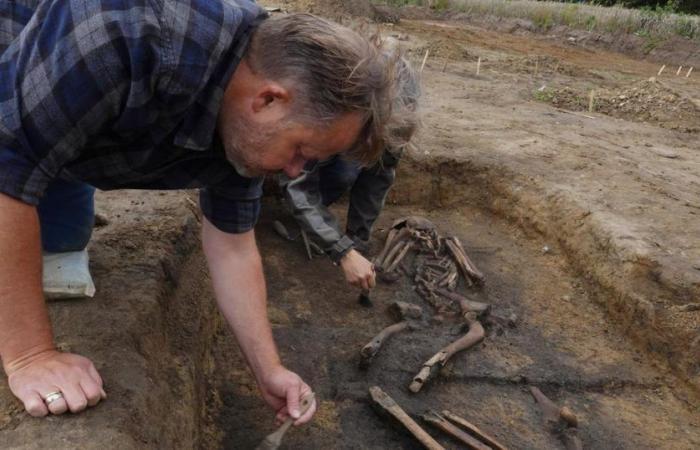By Le Figaro with Reuters
Published
6 hours ago,
Updated 5 hours ago
”
data-script=”https://static.lefigaro.fr/widget-video/short-ttl/video/index.js”
>
Knives, glass beads and brooches dating from 850 to 970 were collected during excavations near Odense.
The excavation of a vast Viking Age burial site in Denmark has uncovered 50 exceptionally well-preserved skeletons which archaeologists say should shed light on the lives of this Nordic people known for their maritime exploits in the Middle Ages. Age. The skeletons, discovered near Odense, Denmark’s third-largest city, remained intact thanks to high water levels and favorable soil conditions that prevented them from decomposing, according to Michael Borre Lundoe, head of the excavation at the museum. ‘Odense.
« Normally, when we excavate Viking graves, we are lucky if there are two teeth left in the grave, in addition to the grave goods. But here the skeletons are fully preservedsaid Michael Borre Lundoe. The skeletons are incredible. They are so well preserved. There are five fingers, five toes. This opens the way to new possibilities for discovery. »
Also readArchaeology, a French passion
Rare objects such as knives, glass beads and brooches dating from 850 to 970 were also discovered during the excavations, which began six months ago. According to Michael Borre Lundoe, burial gifts indicate that most of the people were part of a small farming community, although one woman of higher status was buried with a silver-trimmed knife and a piece of glass, this which was rare in the Viking Age.
Archaeologists took soil samples for pollen to determine the season the person was buried and the textiles they wore. An X-ray of a block of earth taken from the site revealed an oval brooch, an iconic Viking Age piece of jewelry associated with women’s clothing, covered in wood and human remains.
On the back of another brooch bearing period-specific ornaments, fragments of mineralized woven textiles provide evidence of the type of clothing worn during the Viking Age, archaeologists said. Most of the skeletons were removed from the graves and packed in cardboard boxes at the museum to dry before examination and final cleaning.
”
data-script=”https://static.lefigaro.fr/widget-video/short-ttl/video/index.js”
>






